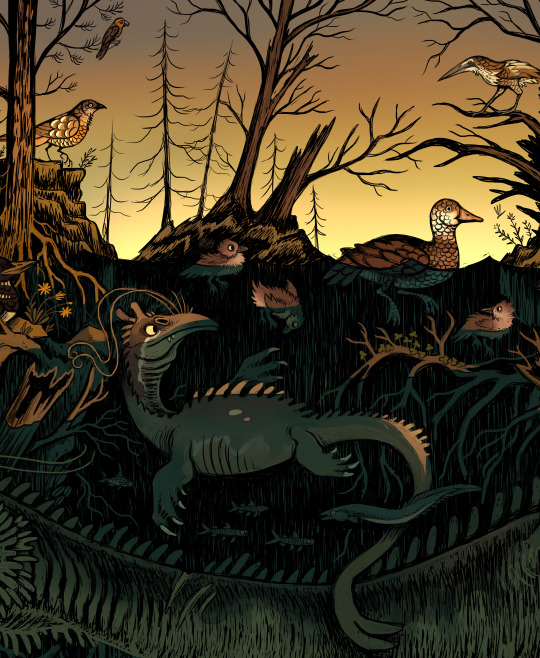#pictish beast
Text
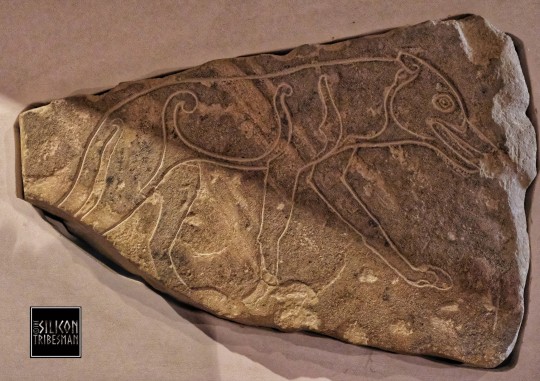


Inscribed Pictish Wolf Symbol Stone, Inverness Museum and Gallery, Inverness, Scotland
#Pictish#pict#pictish art#pictish beast#pictish design#pictish stones#pictish symbols#archaeology#Inverness#Scotland#wolf#beast#relic#artefact#ancient cultures#ancient craft#ancient living
427 notes
·
View notes
Note
May I have a Friday fun fact?
Today You Learned about the Pictish Beast!
In Scotland, there was a group of people called the Picts. Contrary to what you probably think, it’s unlikely they tattoed themselves with woad to look blue, because scientists tried it out and found out it makes a crappy tattoo material. And they did a lot of cool carvings that they left around Scotland, still being found today! Like this:


Some of them have carvings of animals, like wolves, or horses, or boars. Cool stuff. Except that they also sometimes have this thing:

What the eff is that? Well, in truth–we don’t know. It’s just some creature. What makes this stranger is that while there are some more symbolic images, overall, the Picts were pretty good at carvings of animals–all of them you can tell quite clearly what they are. But the Pictish Beast is just some weird critter. And it keeps popping up! So it must have been something culturally important, but we haven’t a clue what.
There are a lot of random guesses I’ve heard over the years, including:
-A seahorse.
-An elephant.
-A dolphin.
-A kelpie.
-The Loch Ness Monster.
-Some unknown, mythical creature from the long-dead Pictish religion we’ve never heard of.
-A stylized animal-shaped brooch.
[shrugs] Who knows, man.
12 notes
·
View notes
Photo


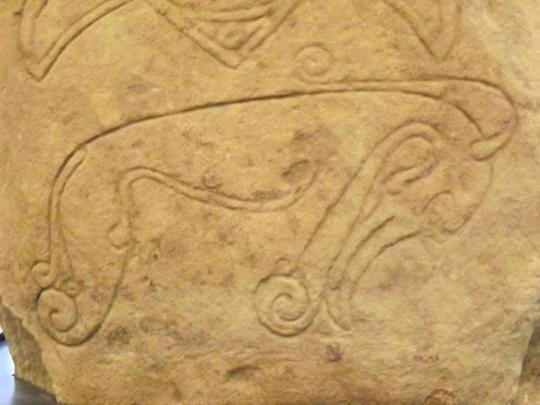






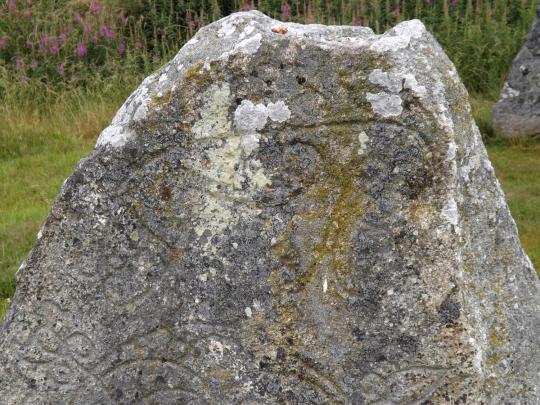
I’m pretty sure I’ve posted most of these photos before, or at least wider shots of the whole stones they appear on for some of the detail photos, but I wanted to do a little compilation.
So! This odd little critter, which I have mentioned before, is commonly known these days as the Pictish Beast. We don’t know what it means or even really what it’s supposed to be, but it shows up a lot - more, in fact, than most images recognisable as a real animal - so it must have been a symbol of some significance.
However, something that I find disproportionately annoying: in some of the older scholarship, such as the influential work The Early Christian Monuments of Scotland, it’s referred to pretty consistently as an elephant symbol. And I’m just like... really? You had to pick a real animal to compare this thing to and you went with an elephant? Not something it actually kind of looks like, like a dolphin or a seahorse? I know some old mediaeval drawings of elephants were pretty wacky but the descriptions they were based on usually didn’t begin and end with ‘it’s got a long nose’, there was typically something about tusks and, you know, legs rather than peculiar curly tentacle-things.
Personally I think it’s meant to be something like a kelpie. Something about it feels aquatic.
20 notes
·
View notes
Text
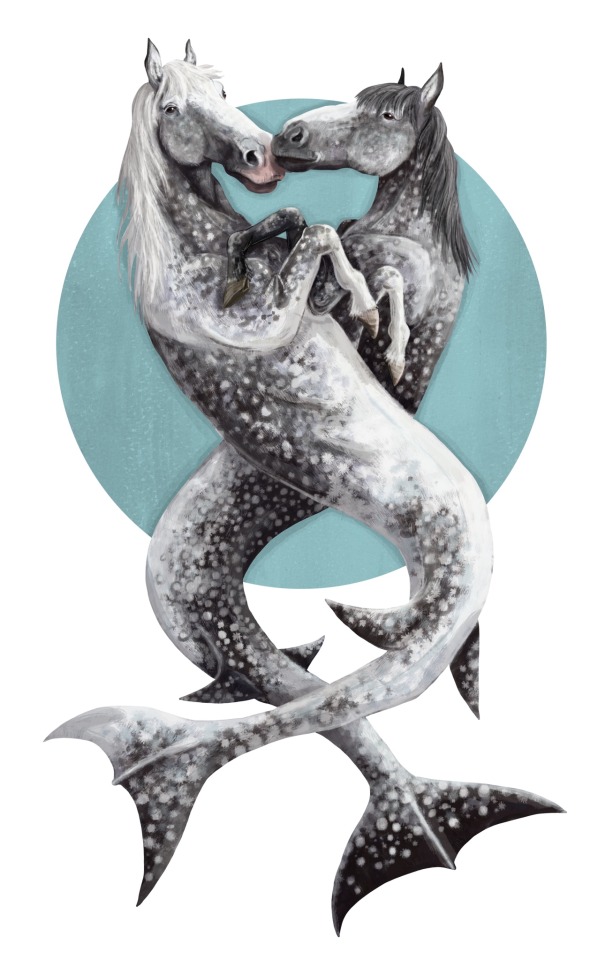
Sea horse hug- loosely based on a sea horse carving from the Aberlemno stones. This carving may be depicting Pictish beasts or be more related to silkie mythology.
#digital art#digital illustration#fantasy#art#folklore#mythology#monster#mythical creatures#artists on tumblr#creature#celtic mythology#Pictish beast#silkie#horse art#scottish mythology#mythology art#seahorse#sea horse#aberlemno stones#mythologyart
9 notes
·
View notes
Text
Time Travel Question : Medievalish History 8 and Earlier
These Questions are the result of suggestions from the previous iteration.
This category may include suggestions made too late to fall into the correct earlier time grouping. Basically, I'd already moved on to human history, but I'd periodically get a pre-homin suggestion, hence the occasional random item waaay out of it's time period, rather than reopen the category.
In some cases a culture lasted a really long time and I grouped them by whether it was likely the later or earlier grouping made the most sense with the information I had. (Invention ofs tend to fall in an earlier grouping if it's still open. Ones that imply height of or just before something tend to get grouped later, but not always. Sometimes I'll split two different things from the same culture into different polls because they involve separate research goals or the like).
Please add new suggestions below if you have them for future consideration. All cultures and time periods welcome.
#Neolithic#Anatolian#Ancient World#Bible#Isaiah#Prophets#Phoenicians#Proto-Ancient Religion#Pre-Mamluk#Hinduism#History of Religion#History of India#Middle Ages#Religious History#The Pictish Beast#Picts#History of Music#Cathedrals#1000 BCE#Ancient Israel#Slavic People#100 BCE#Petroglyphs#Paleolithic
55 notes
·
View notes
Photo
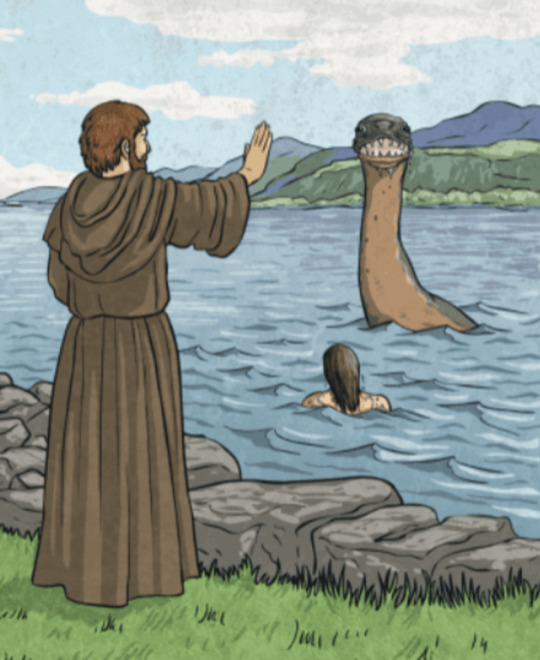
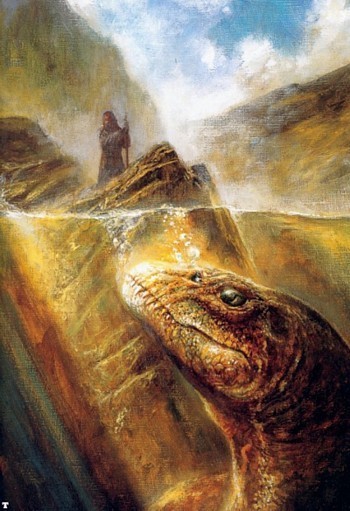
On the 22nd of August 565 the Loch Ness Monster was invented, or first spotted, depending on the way you look at it!!
The Loch Ness Monster has long fascinated Scots and tourists alike, with regular reported sightings of the aquatic beast. But the earliest written reference linking such a creature to Loch Ness in the Scottish Highlands can be found in the biography of Saint Columba, the man credited with introducing Christianity to Scotland
Columba was said to have been on his way to visit a Pictish king when he stopped along the shore of Loch Ness. Seeing a large beast about to attack a man who was swimming in the lake, Columba raised his hand, invoking the name of God and commanding the monster to “go back with all speed.” The swimmer was saved and Columba praised for his efforts.
Later revered as a saint, Columba’s life was written about 100 years after the supposed Nessie event, which leads some historians to doubt its accuracy…...no shi!
186 notes
·
View notes
Text
hi new chair friends! there are a lot of you !

i am a decorative arts historian so i post a lot of chairs but not all chairs, so if you are interested in more, i recommend perusing my dec arts tag.
here's a random smattering of posts from it:
Eileen Gray's Dragon Chair
an extremely modern looking tea set from the late 19th century
an ask i got about kelpies that sent me down a research rabbit hole about the pictish beast
a 17th century cabinet covered in birds
more Clara Porset chairs
the Trans-Siberian Railroad Fabergé egg (it has a tiny train inside!)
and, of course, the gender fluid teapot
i love researching shit so feel free to ask me things about chair and/or non-chair art!
28 notes
·
View notes
Note
Ooh, the Ion Dragon came from the Philippines? Given the Titans' mythological inspirations it's kind of a shame to not have referenced the Bakunawa, a dragon of Philippine mythology said to eat the moon during eclipses.
Still catching up on Monarch myself, but this sounds like a missed opportunity that AbraxasVerse can capitalize on. Also, I feel like we could use Titans who could've in-universe been the basis for more relatively obscure mythological monsters, like the Bakunawa, or Pictish Beast. This could be a cool way for viewers to want to learn more about mythologies beyond the heavy hitters.
put a pin on pictish beast btw. i may have a new empty fullness chapter idea.
10 notes
·
View notes
Photo
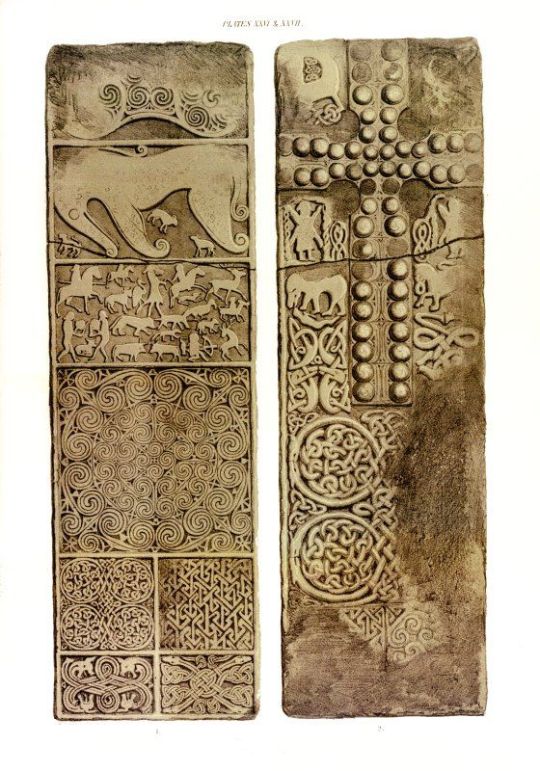
The Clach a' Charaidh or Shandwick Stone
The Clach a' Charaidh or Shandwick Stone is a Class II Pictish stone located near Shandwick on the Tarbat peninsula in Easter Ross, Scotland. The cross faces the seaward side and the secular scene faces inland. The latter contains six panels, the first (from top to bottom) being a standard Pictish double-disc, the second being a Pictish beast and the third being a possible hunting scene, with warriors depicted alongside an eagle, a boar and various other creatures; the bottom three panels consist of woven patterns.
The stone is now encased in a glass cover room. The Gaelic name Clach a’ Charaidh means ‘stone of the grave-plots’: a burial ground here was recorded in 1889 as last used during the cholera epidemic of 1832 and ploughed under about 1885.
text abridged from wikipedia
101 notes
·
View notes
Note
What would you recommend to an aspiring Celticist for a tattoo? My sister wants to get matching Celtic tattoos, and while I’ve started to study Celtic mythology, I’m definitely no expert lol. I know a lot of symbols you’d find on the internet are bullshit, and a lot of the real ones have a ton of baggage associated with them (literally the first thing I told my sis when she brought this up was that we had to be careful & do our research when picking these out bcs the nazis looove that shit). But what would you recommend? Is there anything we should definitely steer clear of? Thanks!!
I'm going to either be really helpful or really non-helpful: A lot of this will depend on you and your sister.
Like, for me, when I've thought of Celtic-inspired tattoos, they're always things that are very personal to me. Like, for example, Bres' name in Ogham on my wrist, since it's always been him and me surviving this together, the Children of Lir, because that's a personal good luck symbol (yes, the most notoriously UNLUCKY story in the Mythological Cycle -- I have a Children of Lir necklace that I wore when I was giving my Capstone Presentation in my undergrad, and I've worn it to every talk I've ever given, even to my interview with my current program), an image of an owl (for Blodeuedd) or something like the Pictish Beast, since I love marine animals and waterhorses in the folkloric tradition. So, I'd look at what appeals to you and your sister, your relationship, shared interests, etc.
There's only one Celtic image that's formally been designated as being a potential white supremacist symbol by the anti-defamation league, and that is the Celtic Cross.
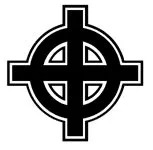
This is the image that most white supremacists will use, you'll notice that it has very short ends.
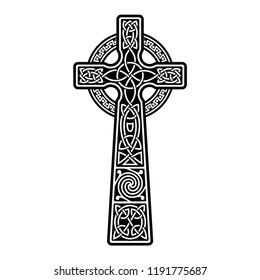
This is the more traditional Celtic cross -- you'll see these in just about every single tourist shop in Ireland, as well as in cemeteries. I'd be lying if I said that I don't still feel a bit of a jolt whenever I see the regular one in a tattoo; it shouldn't, because it's an image that is emblematic of Irishness and Irish heritage. And I don't feel that way about, say, a necklace, but a tattoo is much more different to me. It's permanent, it's...intimate. So I would suggest staying away from either version, even though the one at the bottom is NOT the one that has been appropriated by white supremacists.
I also tend to be distrustful of people who have like....mixed Celtic and Nordic symbols. Like, the Vikings did settle in Ireland, some Irish words are based in Norse terms, Cork, Dublin, and Waterford are Viking cities originally, there are a lot of folktales in common between Ireland and Norway, there are historic links there. That being said, anyone who treats them as being interchangeable (the term "Nordic-Celtic" makes me shudder whenever I see it in an organization's name and, no, I do not give a single fuck if you say that you aren't THAT kind of Nordic Celtic) raises my fight or flight response. Like, they're both part of this implicit idea of White Warrior Male Culture. But that's not a problem unless you're getting multiple tattoos. (Tbh, if I see a random Celtic knot on someone...I might think 'white supremacist' or I might think 'Irish American', it depends on everything else.)
...also a Celtic knot world tree symbol. Not because they're white supremacist, but because it isn't really based strongly in the Irish tradition.
Quite a few people in the field will get ogham tattoos, especially in Modern or Old Irish, possibly using a word or phrase that's important to them. One friend of mine has one that is a phrase that is related to their health problems and reflects their fortitude. You might get an image based on a particular story (I might actually choose the Children of Lir, just because, everything else about it aside...it does contain a really strong sibling relationship.)
Basically: Why do you want a Celtic-inspired tattoo (from any of the various Celtic cultures?) What are you interested in? What speaks to you as people?
12 notes
·
View notes
Text




Abernethy Pictish Symbol Stone, Abernethy, Perth and Kinross, Scotland
#pict#pictish#pictish stone#symbol#stones#pictish art#pictish beast#ancient cultures#ancient sites#ancient living#archaeology#Scotland#outdoors#abernethy
315 notes
·
View notes
Text
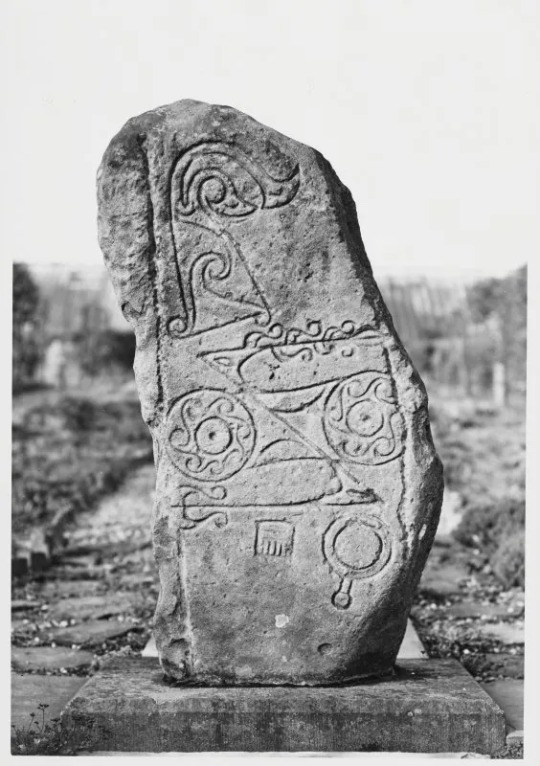
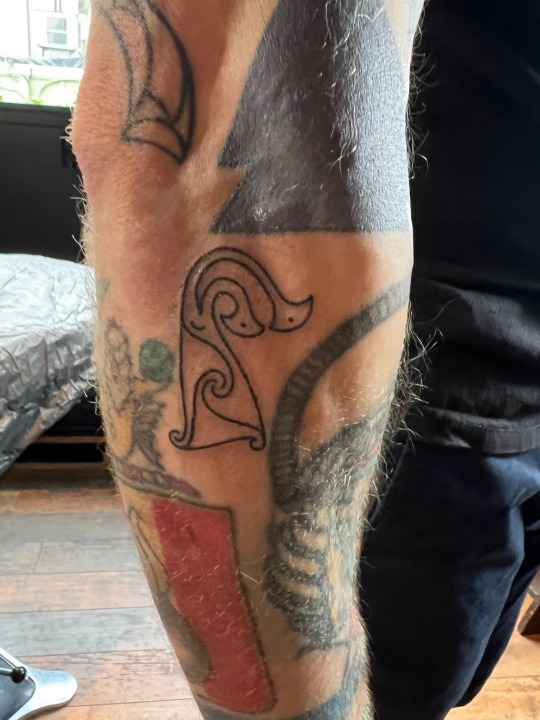


last coupla spaces filled with last coupla pictish symbols. a flower and beast.
4 notes
·
View notes
Photo

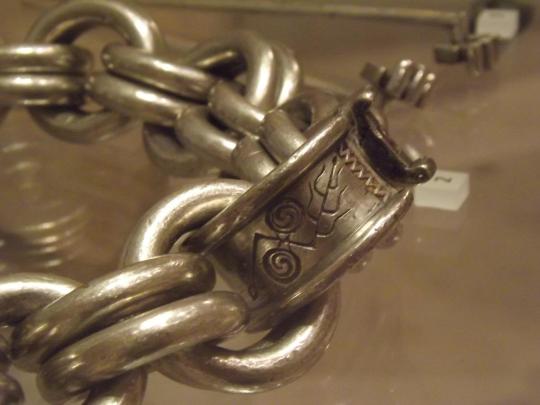

A couple of Pictish silver closeups. Firstly the two Norrie’s Law plaques, with their intricately impressed double-disc-and-Z-rod symbols and beast heads. One has a border and the other doesn’t, but as far as I can tell the marks are otherwise identical, so possibly they were made with the same stamp.
Then two views of the end-ring of the Whitecleuch Chain. One side has another double-disc-and-Z-rod, while the other has a notched rectangle still picked out in red.
Here’s a little bit of Pictish trivia for you: while the double-disc-and-Z-rod is an extremely common symbol and has been found all over the place, versions where the Z-rod is actually Z-shaped like in these ones are surprisingly rare. It’s usually the other way around, like an angular S.
10 notes
·
View notes
Text
The Maiden Stone and Persephone
The Maiden Stone and Persephone
The Maiden Stone
The beautiful pink granite Maiden Stone stands near Inverurie in Aberdeenshire. It is an 8th century Pictish stone. On one side it bears designs favoured by the Picts, such as the comb and mirror, the mysterious Pictish Beast (Dolphin? Elephant? Mermaid? Nobody knows…) and a centaur at the top.
On the other side there is a very worn Celtic Cross, indicating that this may have…

View On WordPress
#Aberdeenshire#folklore#history#mythology#pictish stones#picts#Scotland#scottish history#standing stones#statue
3 notes
·
View notes

